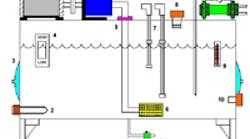Figure 3. These jars of oil show the visible results from hydraulic system flushing.
Select image to enlarge.
Breather cap - Verify that the breather cap (no. 8 in Figure 1) has a rating of approximately 10 ∝m. This is the first line of defense for contaminants entering the tank. Depending on the location, the breather cap may need to be changed a couple of times a year. Other options include pressurizing the reservoir with an internal bladder or using a moisture removal type breather.
High-temperature switch - Oil will start breaking down at 140°F and many systems will not shut the unit down until the oil temperature reaches 160°F. Hydraulic systems are designed to operate below 140°F. If the oil temperature rises above that level then a problem in the system exists. This could be caused by a cooler malfunction, excessive bypassing at the pump, valves, cylinders, and hydraulic motors. Set the high temperature switch (no. 10 in Figure 1) at 140°F to shut the pump off, preventing oil breakdown.
Heat exchanger flushing and cleaning - The tubes in a water type cooler (no. 12 in Figure 1) should be flushed periodically to remove deposits. A mild alkaline solution such as Oakite or a 1.5% solution of sodium hydroxide or nitric acid can be used. If an air cooler is used, verify that the cooler fan is turned on at approximately 120°F and turned off at about 110°F. A metal comb should be used to straighten the fins on the unit if necessary.
Leaks - Don't be surprised if new leaks develop and old leaks get worse once the temperature is up. Viscosity drops as temperature increases. Thinner oil gets through orifices more easily so it would be wise to fix current leaks and inspect seals, junctions and hoses before summer arrives.
Once the system is thoroughly inspected and upgraded a preventive maintenance schedule should developed to perform these checks on a regular basis. Many times no thought is given to the hydraulic system as long as it is running and the machine is operating. By performing the checks in this article, your systems will operate at maximum efficiency, operate more safely, and reduce downtime.
GPM Hydraulic Consulting Inc. provides plant consulting, troubleshooting, and training. For more information, visit www.gpmhydraulic.com or call (770) 267-3787.



